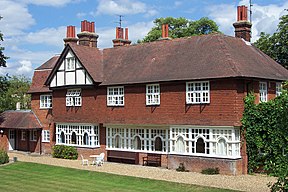Clare Hall, Cambridge
| Clare Hall | |
|---|---|
 |
|
 |
|
| University | University of Cambridge |
| Location | Herschel Road (map) |
| Established | 1966 |
| Named for | Clare College |
| Sister college | St Cross College, Oxford |
| President | David Ibbetson |
| Undergraduates | None |
| Postgraduates | 145 |
| Website | www |
| Graduate Student Body | www |
| Boat club | www |
Clare Hall is a constituent college of the University of Cambridge, England. Founded in 1966 by Clare College, Clare Hall is a college for advanced study, admitting only postgraduate students alongside postdoctoral researchers and fellows.
Clare Hall is one of the smallest colleges with 180 graduate students, but around 125 Fellows, making it the highest Fellow to Student ratio at Cambridge University.
Clare Hall was founded by Clare College (which had previously been known as "Clare Hall" from 1338 to 1856) as a centre for advanced study, but was also intended to become a social group of men and women with their families that would include graduate students studying for higher degrees in the university, research fellows working at post-doctoral level, permanent fellows holding faculty or research posts in the university, and visiting fellows on leave from universities around the world.
After Clare College decided to establish this new centre in January 1964, the initial planning was carried through by a small group of fellows of the college chaired by the Master, Sir Eric Ashby. It was soon agreed that the new centre would be called Clare Hall, the ancient name by which the college itself had been known for more than five hundred years until the mid-19th century.
The Institute of Advanced Studies at the University of Bologna is so far the only institution abroad explicitly modelled upon Clare Hall.
The architect Ralph Erskine was appointed to design the buildings for Clare Hall, which were to include common rooms, offices and dining facilities, a house for the President, and twenty apartments for visiting fellows. A neighbouring house, Elmside in Grange Road, provided rooms for the relatively small number of graduate students.
...
Wikipedia
